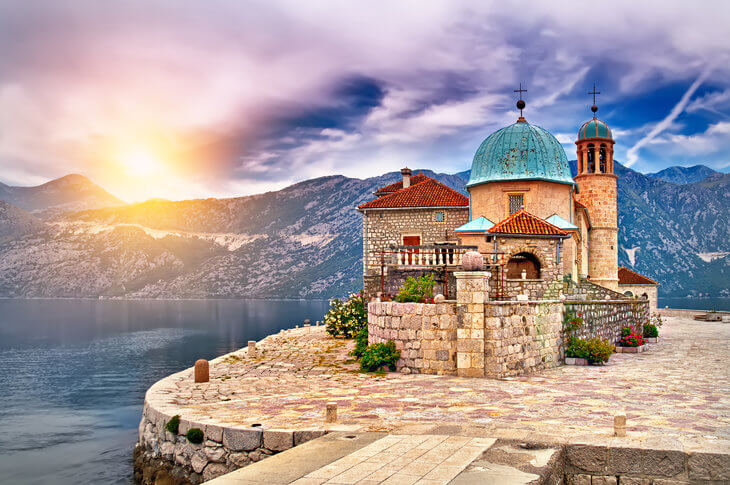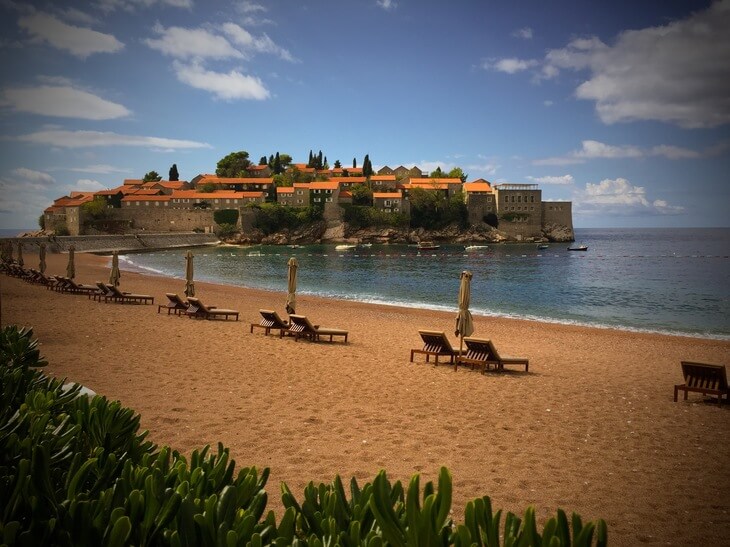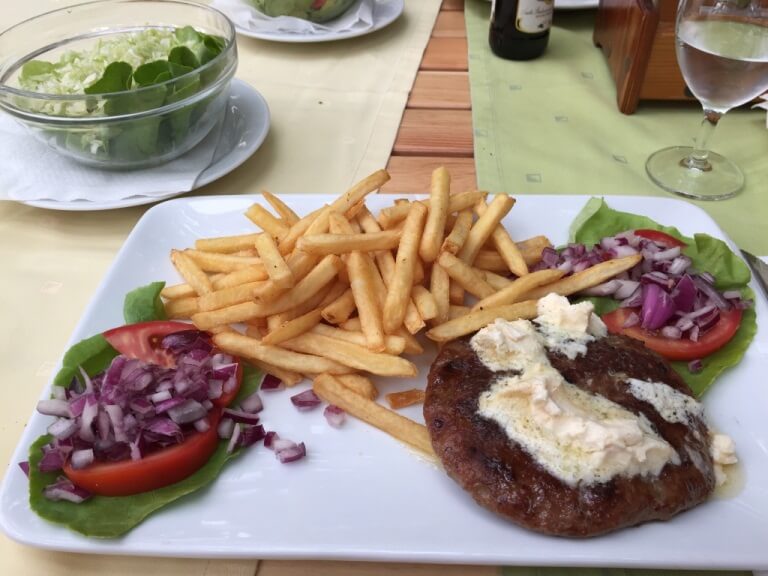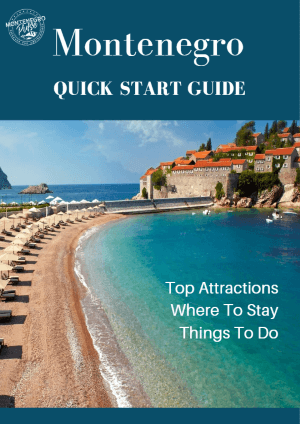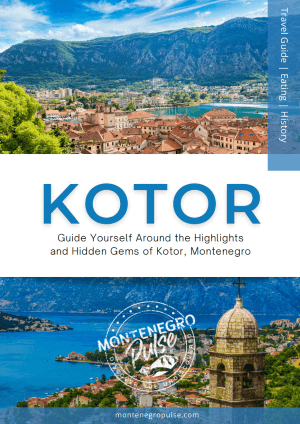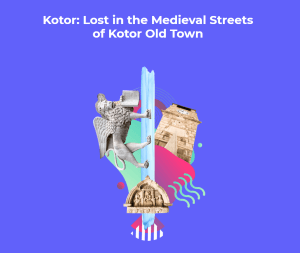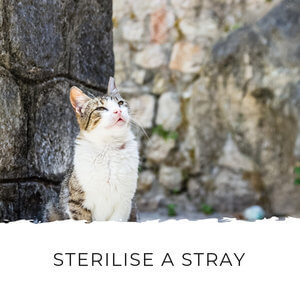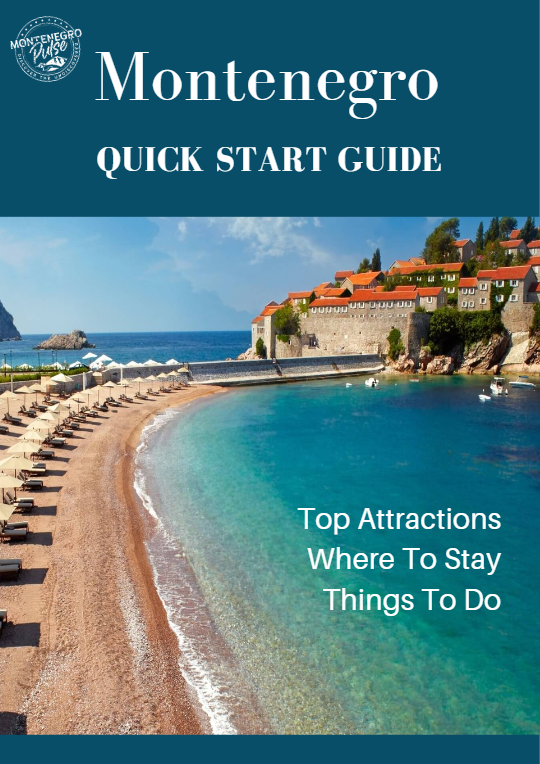Montenegro Pulse contains affiliate links and is a member of the Amazon Services LLC Associates Program. If you make a purchase using one of these links, I may receive compensation at no extra cost to you. See my disclaimer for more information.
Montenegro Croatia Border: The Ultimate Guide
Everything you need to know to cross the Montenegro Croatia borders, including unknown routes that could save you time!
Questions about the Montenegro Croatia border are some of the most frequently asked questions about Montenegro.
It doesn’t take much research to realize that Dubrovnik airport is very close to Montenegro and, with plenty of inbound flights, it's a great airport to fly into when you're travelling to Montenegro.
But then come the questions about getting from Croatia to Montenegro...
“Is the border really as bad as people say?”
“What’s the best way to cross it?”
“Can I drive to Montenegro with a Croatian rental car?”
Here's what you need to know about the Montenegro Croatia border before you arrive.
Montenegro Croatia Border Options
There are two border crossing options if you are driving in from Dubrovnik:
If you are driving from Split, or further north in Croatia, you'll find a secret inland route with less traffic further down this page.
There is a new ferry connecting Dubrovnik in Croatia and Budva in Montenegro. Now you can travel between these two towns in just 2 hours!
Click here for information and tickets from Dubrovnik to Budva
Click here for information and tickets from Budva to Dubrovnik
Skip the queues at the border and Kotor Bay Ferry, which can both be hours long in summer! You can hire a car in Budva if you'd like to have a rental car for your stay.
Debeli Brijeg – Karasovići
Debeli Brijeg – Karasovići is the main border between the two countries. Debeli Brijeg is the Montenegrin checkpoint and Karasovići is the Croatian checkpoint.
This is the border crossing most people use because it lies on the Adriatic Highway that connects the two countries.
It's important to know that there's around 5km of no-man's land between the two checkpoints. Sometimes people decide to walk between the two and don't realize the distance they'll have to drag their luggage.
Added to that, the walk towards Croatia is mostly uphill!
Njivice-Konfin
Njivice-Konfin is the second border option. It’s much smaller and can’t process the same amount of traffic as the main border. You’ll often see it touted as the local’s secret option, and that was true until a couple of years ago, but it’s quite well-known now.
To get to this border when arriving from Dubrovnik, you have to turn off the Adriatic Highway towards Molunat and then follow the country road through Vitaljina until you get to the border crossing.
When starting in Montenegro, you have to turn off the highway towards Njivice (opposite Novi Mall shopping center) and follow the road until you get to the Montenegrin border checkpoint.
Before you choose your border, make sure you have the right paperwork. You can read more about that below.
Dubrovnik Car Hire Deals
I recommend Localrent.com for car hire in both Montenegro and Croatia.
Localrent is a regional aggregator that brings together the best small rental agencies, which means you get great service and great deals!
Rent a car in Dubrovnik for as little as €10 a day!
Wait Times At the Croatia Montenegro Border
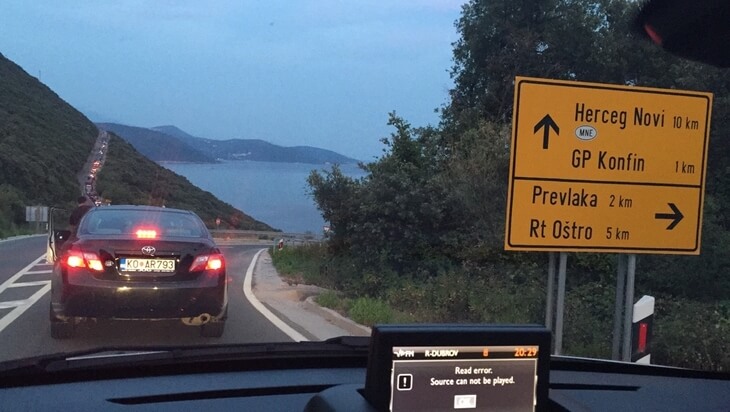 The Croatian side of the Njivice-Konfin border in July. Total crossing time: 3 hours.
The Croatian side of the Njivice-Konfin border in July. Total crossing time: 3 hours.Is the Montenegro Croatia border really as bad as they say?
The answer to this isn’t straight forward.
In July and August, the wait time at either border can be anywhere from 20 minutes to several hours. It’s very unpredictable. As a general rule, the wait time will be shortest very early in the morning, around 5-7am. The earlier you can get to the border, the less time you will spend queuing.
The good news is that outside of July and August, getting through the borders is significantly faster. Crossing usually takes 20 minutes, or up to an hour on a busy day. Considering you have to go through two checkpoints, it’s not too bad.
If you’re visiting in July or August, try to fly into one of Montenegro's airports. Montenegro has two international airports:
- Tivat Airport: in the Bay of Kotor, this airport the most convenient for a stay on the coast.
- Podgorica Airport: in the capital city, this airport is most convenient for a stay in the north, or in Bar or Ulcinj.
If you do fly into Dubrovnik, consider spending a night there and then crossing into Montenegro early the next morning. Or spending the day in Dubrovnik and crossing over in the evening, when it’s cooler.
The worst time to cross the border from Montenegro into Croatia is the second-last weekend in August. The queues are always hours-long as people head back to Europe at the end of the summer holidays.
Local's Tip: Between mid-July and mid-August, try to arrive on a weekday. The roads and borders are busiest on the weekends.
If you're driving anywhere past Herceg Novi, you'll probably also face queues for the Kotor Bay Ferry and traffic through Tivat and Budva on the weekends.
Croatia Montenegro Border Live
A great way to check the current status of the border crossing is to check the live webcams.
- Karasovići (Croatian border) webcam: Click here to go to the webcam.
- Debeli Brijeg (Montenegrin border) webcam: Click here to go to the webcam.
Montenegro Croatia Border By Car
Most people who fly into to Dubrovnik hire a rental car there and drive across into Montenegro. It’s only 20 minutes by car from Dubrovnik airport (in an area just out of Dubrovnik called Ćilipi) to the Croatian border, and only 45 minutes in total to Herceg Novi in Montenegro.
>> Read about all the ways to get to Montenegro from Dubrovnik Airport.
If you’re hiring a car in Croatia (I recommend Localrent for the best car hire in Dubrovnik) you’ll need to let them know in advance that you are driving to Montenegro so that they can issue you the right paperwork.
If you need car insurance you can buy it at the Debeli Brijeg border crossing. Currently, the price for insurance at the border is €15 for 15 days, €28 for 30 days and €205 for a year. Click here to find the full list of tariffs for all vehicle classes.
When you get to the checkpoint, tell the guard you need to buy insurance and they’ll point you over to the Sava office, where you can buy it.
You’ll need your ownership/registration papers and your current insurance. It’s important to note that you can only buy insurance at the Debeli Brijeg border. If you need it, you must arrive in Montenegro via this checkpoint.
>> Find out if you need car insurance in Montenegro here.
Montenegro Croatia Border By Taxi
Getting a private transfer across the border is an easy way to cross between countries if you don’t have a car.
This is what we do when we travel from Dubrovnik Airport, especially in peak season because they can arrange for us to change cars at the border which means we don't wait for so long.
Unfortunately, and contrary to some claims, there’s no special lane or crossing for taxis, so the wait is the same as if you were crossing in your own car.
If you plan to hire a car for your stay in Montenegro, you can hire a car in Montenegro. This can be cheaper because you avoid the cross-border fee for driving in Montenegro (€10-20 per day). The security deposits on Montenegrin cars are also lower - around €100 compared to €1100 in Croatia.
Best places to book transfers to Montenegro:
Montenegro Croatia Border By Bus
Dubrovnik to Montenegro Public Bus
There’s a daily bus linking Kotor, Tivat and Herceg Novi with Dubrovnik which
crosses the Debeli Brijeg-Karasovići border.
The bus doesn’t stop at Dubrovnik airport, so if you’re arriving there and want to catch the bus, you’ll need to get a bus to Dubrovnik town (costs around €4.90). Then you get the bus from Dubrovnik’s main bus station (costs around €25). You can find book tickets online at busticket4me.
The most common complaint about this bus service is that the drivers often smoke while they're driving.
>> Find out more about getting from Dubrovnik Airport to Montenegro here.
Secret Inland Route from Split to Bay of Kotor
If you're driving to Montenegro from further north in Croatia eg. Split, you can take this little-known inland route.
Although there's always traffic at the border crossings in summer, the wait times on this route can be significantly lower and you get the benefit of getting off the highway and seeing some lesser-known beauty spots.
On this route you take the turning for Medjugorje, Mostar and Sarajevo (all in Bosnia and Herzegovina) when the highway (E65) ends in Ploće instead of staying on the magistrala, the coastal road through Dubrovnik to Montenegro.
The highway (A1) ends shortly after you cross into Bosnia and Herzegovina and instead you drive on near-empty country roads through Čapljina and Stolac before crossing the border into Montenegro at Vraćenovići and arriving in Lipci in the Bay of Kotor.
There are several attractions you can visit on this route:
- Medjugorje is one of the most-visited religious attractions in the world, after six children claimed to have seen an apparition of the Virgin Mary in 1981.
- Mostar is an interesting town that was destroyed during the civil war of the 1990s. It's bridge was bombed has been rebuilt and is now a symbol of Mostar's resilience and is the scene of some very daring dives into the river below.
- Kravica Waterfall is a stunning waterfall and swimming area that's an ideal stop in summer.
- Stolac is a town directly on the route where you can get coffee by Provalije Waterfall and visit the town's impressive fortifications .
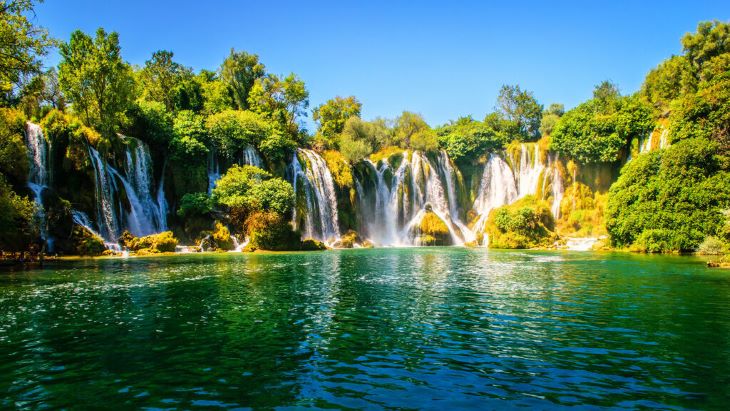 Kravica Waterfall. Image: Deposit Photos
Kravica Waterfall. Image: Deposit PhotosFinal Thoughts
Crossing the border between Montenegro and Croatia is generally simple and easy, but it can take a long time in July and August, when traffic is at its peak.
You can drive across, book a transfer, take a bus, or take a ferry.
If you're driving, you can choose from two coastal border crossings or take the inland route through Bosnia and Herzegovina. In summer, you can shorten your trip by crossing the border at night or early in the morning.
Booking a transfer to take you across can help you to cross the border faster. Hiring a car in Montenegro can be cheaper too.
You can also take a public bus from Dubrovnik to Kotor, Tivat, or Herceg Novi.
Another option is take a ferry from Dubrovnik to Budva. Although this service is new, it's getting great reviews. It's quick, comfortable, and inexpensive!
Related Articles
- How to Get From Dubrovnik Airport to Montenegro
- Driving in Montenegro: Road Rules, License Requirements and More
- Do You Need a Car in Montenegro? Making the Right Choice for Your Trip
- Renting a Car in Montenegro: Ultimate Guide to Montenegro Car Hire
- Kotor Bay Ferry: How to Use the Bay of Kotor Ferry in Montenegro
- Ultimate Guide to Car Insurance in Montenegro
- Flights to Montenegro: Airlines and Flight Options
- Podgorica Airport: Everything You Need to Know
- 10 Best Montenegro and Croatia Tours
- 7 Best Small Group Tours to Croatia and Montenegro
- Best Montenegro Day Trips From Dubrovnik
- Home
- Travel to Montenegro
- Montenegro-Croatia Border
